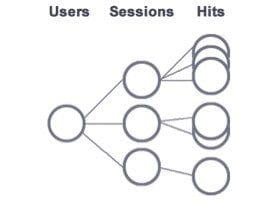The Internet has made it easier to sell products and services worldwide. But easy access without an engaging customer experience cannot guarantee sales. Presenting site content in a local language is a key part of providing an engaging experience.
In some regions, launching a site without localized content can be fatal, as consumers ignore brands that do not honor and support local requirements. This makes translation important for retailers that are trying to generate sales globally.
There are many tools available that help retailers translate their site content. This post will cover some of the more popular ones. The translation setup will vary across merchants, depending on the type of platform they use.
1. Merchants Using a Hosted or Licensed Platform
A large percentage of merchants use a hosted platform provider for their ecommerce store. In many cases the provider offers translation tools that the merchants can use.
For example, Shopify comes with several themes that are translation ready. These themes have the “Edit Language” option that allows changing the language. For themes that are not translation ready, merchants can use hosted, machine-translation tools, such as Google Translate.
Many hosted platforms rely on the shopper to manually translate content via the Google Website Translator plugin, whereby retailers install the plugin on their sites and shoppers can then access, to machine-translate the content into their language. This plug-in can be added to any website and supports over 90 languages. Volusion, for example, supports Google Website Translator as does Shopify and many others. Microsoft’s Bing Translator also offers a similar plugin.
Magento, the open source licensed platform, provides language packs that translate English text into the desired language. For example, labels like “Login” and “Password” will show in the translated language once the language pack has been deployed.
But merchants using Magento can also write custom code for translation using locale files, which have strings with translated content that correspond to a specific locale (region and language).
2. Merchants with ‘Best-of-breed’ Platform
The term “best of breed” means that the merchant has taken the best products for the different functional areas and then integrated them to create a platform. These functional areas could be, for example, front-end store, content management, taxation, and order management.
In this environment, the content management solution is responsible for creating the translated content. It is possible that the content management solution also integrates with another best-of-breed translation solution or service. But since all the content is authored in the content management system, before it is published, it gets translated, either by human translation (to ensure accuracy) or via machine-translation tools.
For example, a large, enterprise retailer may pick Oracle’s ATG for ecommerce and Adobe’s Experience Manager for content management. Both are best-of-breed products in their respective categories. Adobe Experience Manager comes with a translator tool that utilizes dictionaries created in different languages to do the translations. The tool works with Bing Translator or by integrating with any cloud-based translation service.
Another best-of-breed product that can be used by retailers in this category is SDL, which offers a rich machine-translation environment that allows utilization of a translation memory. This creates an extensive database of the content that has already been translated and helps expedite future translations by doing bulk of the work using the machine translator and minimizing the translation effort by a human. The product also comes with extensive analytics to report on metrics like word counts, costs, and quality compliance.
3. Merchants Using a Custom Platform
Many merchants have built their own ecommerce platform or hired a contractor to build it for them. In these instances, the merchants can utilize one of the above approaches by integrating with Google Website Translator Plugin (or similar) or utilizing a best-of-breed solution. If the merchant prefers, she can also build a complete, custom translation process in the programming language of her choice like Java, C, and so on. Or she can use open-source translation tools like Zanata and Moses to build the translation capability.
Regardless of the approach, involving human translators in the process helps ensure accuracy. Humans who are conversant in the target language can tweak the content for cultural alignment, which is a bigger challenge for translation tools.
Do you translate your website content? Please share your experiences in the comments below.
See “5 Keys for Building a Global Ecommerce Site,” the second article in Gagan Mehra’s 4-part series on language translation.







